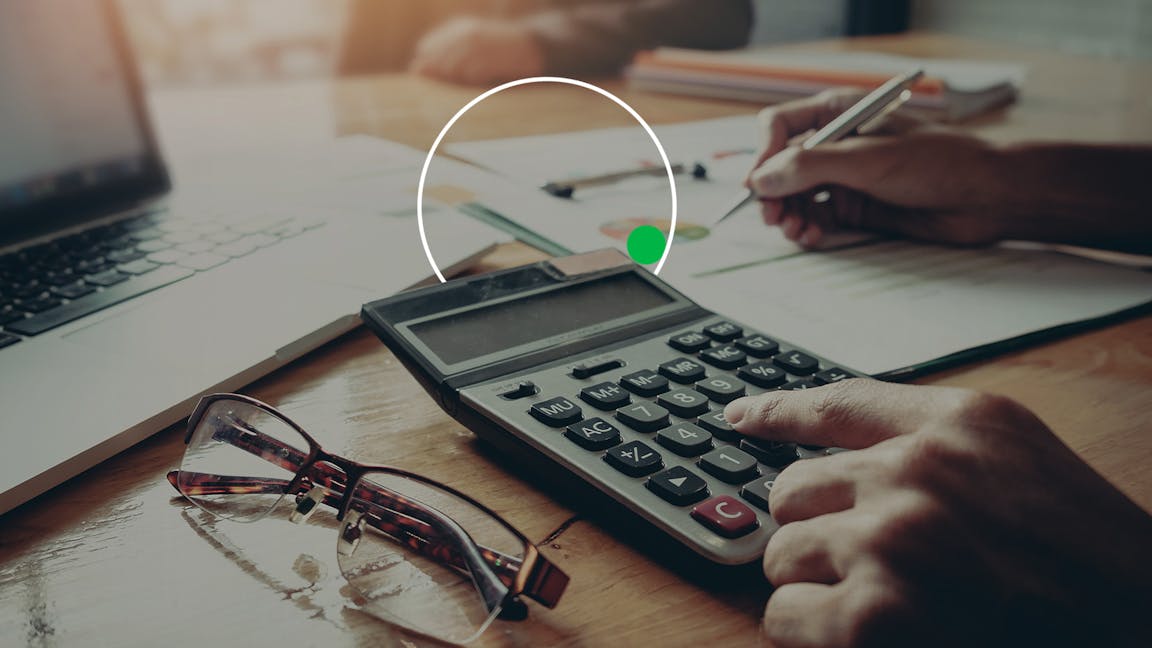
Capital gains tax is a key topic for investors to understand. Here’s what you need to know about it.
At a glance:
- Just as Income Tax is payable on your income, capital gains tax (CGT) is paid when you sell or ‘dispose’ of an asset for more than you bought it for.
- There is, however, a capital gains tax-free allowance of £3,000 per tax year for individuals. This allowance will not change for the 2025/26 tax year starting 6 April, but some capital gains tax rates were adjusted at the 2024 Autumn Budget.
- Holding your investments in a tax-efficient wrapper – such as a Stocks and Shares ISA – is one of the best ways to reduce CGT liability. When assets held in an ISA wrapper increase in value, the increase does not attract CGT when you come to sell or ‘dispose’ of them.
- The annual ISA allowance for the upcoming 2025/26 tax year is the same as the current tax year – £20,000 per person. The annual pension allowance is also unchanged in the upcoming tax year. Most people can make pension contributions up to their relevant UK earnings or £60,000 per tax year, whichever is lower.
Capital gains tax explained
CGT is the tax you are required to pay when you sell or ‘dispose’ of an asset for a profit, or 'gain'. A capital gain is, broadly speaking, the difference between the price you paid for something and the price you sell it for. The tax you pay is on the gain only – not the total sale price.
For example, if you were to buy a piece of art for £5,000 and later sold it for £20,000, you’ve made a £15,000 gain on the asset and you may need to pay CGT on the £15,000.
However, that is before considering the CGT allowance, also known as the Annual Exempt Amount. This provides each UK individual with the ability to make some initial gains that are exempt from tax, full details of which we will outline later. In this example, if the individual hadn’t used all their allowance, the CGT owed may be lower.
The Annual Exempt Amount has fallen in recent years. This means more individuals may be liable to pay CGT unless the assets they are selling are held in a tax wrapper such as a Stocks and Shares ISA.
It should be noted that gains from some assets are free from CGT, as we'll discuss shortly.
What is your capital gains tax annual allowance?
Currently, an individual can make total gains of £3,000 per tax year on assets they have sold or ‘disposed’ of before they pay CGT. This is referred to as the Annual Exempt Amount.
Returning to the example of selling your piece of art, and assuming you’ve ‘disposed’ of no other assets in the current tax year, you would need to pay CGT on £12,000 – the capital gain (£15,000) less the CGT allowance (£3,000).
Is ‘disposing’ of an asset just selling it?
No. It’s important to note that the ‘disposal’ of an asset is broader than just selling it, and includes:
- selling it
- giving it away as a gift (although there are special rules for CGT on gifts to your spouse or civil partner or charity)
- transferring it to someone else
- swapping it for something else
- getting compensation for it (such as an insurance payout if it’s been lost or stolen).
What do you pay capital gains tax on?
Some gains are exempt from CGT, such as those made on the sale of assets held within tax wrappers such as an ISA, Lifetime ISA, Junior ISA or a pension. You also don’t pay CGT on assets you gift to your spouse or UK registered charities. When it comes to property, you do not pay CGT when you sell the home you live in.
You will usually need to pay CGT when you sell the below assets if they have gained value during your ownership:
- Shares or other investments held outside tax wrappers
- Most personal possessions worth over £6,000 (excluding cars). This includes items such as jewellery, paintings, antiques or collectibles (such as stamps or coins)
- Property that is not your main residence: for example, a buy-to-let property or a holiday home
- Your main home if you’ve let part of it out (this does not include having a lodger), used it for business or if it’s a very large property (grounds totalling over 5,000 square metres)
- Business assets such as land, buildings, or equipment.
However, there are also exemptions and allowances that reduce or remove the need to pay tax.
How much capital gains tax will you have to pay?
When calculating the amount of CGT you need to pay, different rates apply based on your income level and can vary by the type of asset.
Higher or additional rate income taxpayers
The CGT rate is 24%. The same rate is applicable on both residential property and chargeable assets, something that was brought in line at the 2024 Autumn Budget.
Basic rate taxpayers
The CGT rate is 18%, having risen from 10% immediately after the 2024 Autumn Budget. This is now in line with the existing 18% rate payable on residential property.
However, if you’re a basic rate taxpayer, there’s a little more to calculate to ensure the amount you pay is accurate.
You need to know:
- Your taxable income. This is your income, minus the personal allowance and any other income tax reliefs you’re entitled to
- Your total taxable gains after the CGT annual allowance of £3,000.
Then, add your taxable income to your total taxable gain after the annual allowance.
If this pushes you from being a basic-rate taxpayer into the higher-rate bracket, you will pay CGT at the higher rate.
If, however, this figure is still within the basic rate income tax band (£12,571 – £50,270), then you’ll pay 18%.
How investors can reduce their CGT liability
- Maximise usage of tax wrapper allowances
Every tax year, adults in the UK have an ISA allowance – currently £20,000. Any interest, dividends or other returns generated by investments held within a Stocks and Shares ISA will be exempt from any form of tax under current government policy.
- Move money from a GIA to a Stocks & Shares ISA
Moving money from a general investment account (GIA) into a Stocks and Shares ISA can help ensure more of your investments – and therefore potential capital gains – are tax wrapped.
- Using a personal pension
Investments held in a personal pension are also exempt from CGT, although withdrawals are subject to income tax. The amount you can contribute per tax year will depend on your personal circumstances, but can typically be up to £60,000. You may be able to contribute more if utilising 'carry forward'. You can find out more about 'carry forward' and the annual allowance here.
So, for those who have money they don’t need to access until they retire, increasing pension contributions may be worthwhile. Please note that high earners may have a reduced pension annual allowance.
Other options to consider
There are some additional options that could help you minimise your CGT liability, though they may require financial advice. These include:
- Selling a certain amount of your assets that sit outside your ISA or pension each year to make the most of your CGT allowance
- Contributing more to your pension through your employer’s salary sacrifice scheme, if they offer one, to bring down your taxable income and pay CGT at a lower rate
- Transferring assets to your spouse or partner to ensure that you make use of both of your CGT allowances
- Carrying forward any capital losses you have made in earlier years to reduce your capital gains tax liability.
Our experts can discuss your options with you or answer any general questions you may have around the capital gains tax allowance. Book a free call to speak with the team. However, for your individual case, it may be important to consult with tax specialists to discuss all of your options. Keep in mind that Nutmeg cannot provide tax advice and can only offer general information.
Deadline for paying capital gains tax
Depending on the type of asset, there are different rules about when you need to report your CGT liability and pay any tax owed.
Self-assessment
If you make gains on the sale of shares or other assets, you can use your self-assessment tax form to report the gain and pay what is due, up until 31 January of the year following your tax return period.
This would be 31 January 2026 for the 2024/25 tax year. Gains on residential property need to be reported earlier.
‘Real time’ CGT service
If you do not have to complete a self-assessment tax return, you can use the UK government’s ‘real time’ CGT service to report capital gains.
The reporting deadline is 31 December in the tax year that follows the one the gain is made in, with payment then due a month after the reporting deadline (31 January). So, if you made a gain on, for example, 1 March 2025, the deadline to report it would be 31 December 2025, with the payment due by 31 January 2026.
For an estimate of your CGT liability, you can use Nutmeg’s online calculator. Please note that tax rules are subject to individual circumstances and may change over time. It is always recommended to consult with a tax specialist to ensure accurate and up-to-date information.
If you have a Nutmeg GIA
As Nutmeg offers managed portfolio services, each account holder has a portfolio of segregated holdings. These holdings are traded and adjusted by our discretionary managers throughout the tax year, with each trade triggering a capital gain or loss on your portfolio. This can help to avoid a larger capital gain or loss at the final point of sale. If you hold a GIA you will receive a consolidated tax certificate (CTC) which includes details for a full tax year.
Risk warning
As with all investing, your capital is at risk. The value of your portfolio with Nutmeg can go down as well as up and you may get back less than you invest. Tax rules vary by individual status and may change. Pension, ISA, JISA and LISA eligibility rules apply. Nutmeg does not provide tax advice. For personalised advice tailored to your specific situation please consult with a qualified tax adviser or financial planner. You can normally only access your pension from age 55 (57 from 2028). If you are unsure if a pension is right for you, please seek financial advice.

